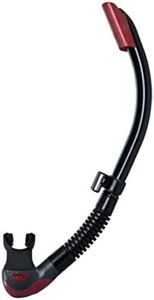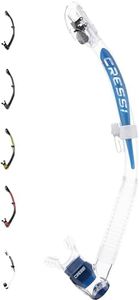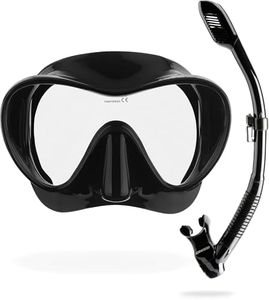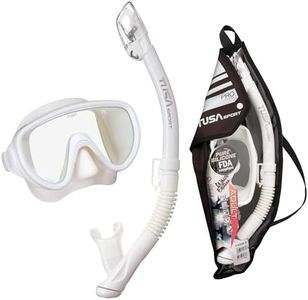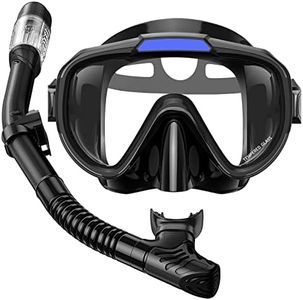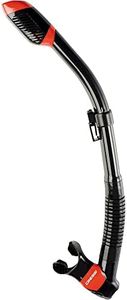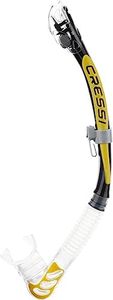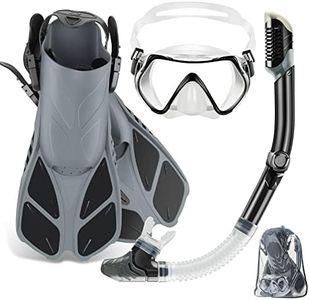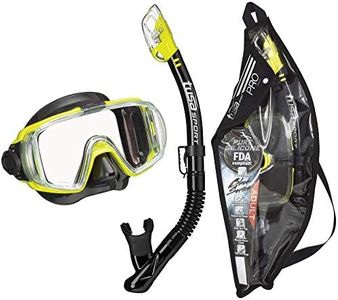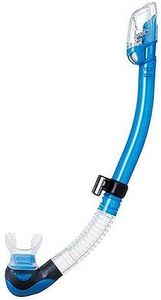We Use CookiesWe use cookies to enhance the security, performance,
functionality and for analytical and promotional activities. By continuing to browse this site you
are agreeing to our privacy policy
10 Best Dry Snorkels
From leading brands and best sellers available on the web.Buying Guide for the Best Dry Snorkels
Choosing the right dry snorkel can make a big difference in how much you enjoy snorkeling. A dry snorkel is designed to keep water out, even if you dive beneath the surface, which means you can breathe with more confidence and less worry about swallowing water. When shopping for a dry snorkel, it's important to understand the different features and how each can suit your swimming style, comfort needs, and planned activities. Paying attention to a few key specifications will help you make the best choice for your snorkeling adventures.Dry Valve MechanismThe dry valve mechanism is the special feature that prevents water from entering the snorkel when you're underwater or surface splashing occurs. This is important because it keeps your breathing easy and your experience enjoyable, reducing the choking or coughing that can happen with water-filled snorkels. Some dry valves are simple floats that seal shut, while others use more advanced engineering with multiple seals. If you occasionally dive below the surface, a high-quality dry valve is a must. For mostly surface snorkeling, any reliable dry system should do. Make sure the mechanism operates smoothly and is easy to clear by exhaling when needed.
Purge ValveA purge valve is a small, one-way opening usually located near the mouthpiece that lets you easily clear out any water by simply exhaling through the tube. This feature is important because it helps keep your breathing tube dry without having to remove the snorkel from your mouth. Purge valves differ in size and design, and larger, easy-to-access valves clear more quickly but may be a little bulkier. Choose a model with a purge valve if you want less hassle with clearing water out, particularly if you are a beginner or snorkel in choppy conditions.
Mouthpiece ComfortThe mouthpiece is the part of the snorkel you bite down on and seal with your lips. Comfort here is critical, as a poorly fitting mouthpiece can cause jaw fatigue or mouth soreness. Mouthpieces can vary from soft, flexible silicone to firmer materials. Smaller, softer mouthpieces are better for those with smaller mouths or who plan to snorkel for long periods. If you have a strong bite or generally larger mouth, a bigger, firmer mouthpiece might feel more secure. Test different sizes and softness levels if possible to find what's most comfortable for you.
Tube Shape and FlexibilityThe shape and flexibility of the snorkel's tube affect how easily it stays in place, fits to your face, and manages drag in the water. Some tubes are completely rigid, keeping their shape, while others have a flexible section near the mouthpiece to allow for easier positioning. If comfort and customizing the fit are important for you, look for a snorkel with a flexible lower section. For minimal drag and a classic fit, a stiffer tube is fine. Consider your preference for fit and whether you move your head a lot when snorkeling.
Splash GuardA splash guard is an extra feature at the top of the snorkel that helps prevent water splashes from waves or people nearby from getting into the tube. It's not as critical as the dry valve for underwater use, but it does add another layer of protection at the surface. The design and height of the guard can vary, offering more or less splash protection. If you plan to snorkel in rough or busy waters, prioritize a snorkel with a pronounced splash guard.
Attachment ClipThe attachment clip is what lets you secure the snorkel to your mask. A good attachment clip should be easy to fasten, adjust, and remove, while keeping the snorkel firmly in place. Simple clips can break easily while more sturdy, adjustable clips provide lasting comfort and hold. If you regularly switch between masks or loan your gear to others, look for a snorkel with a user-friendly, universal clip system.

